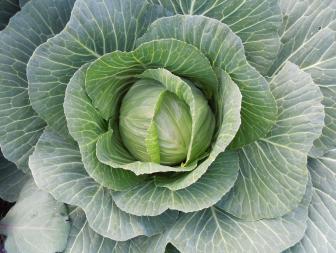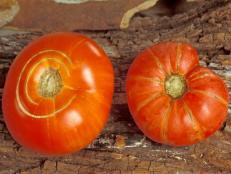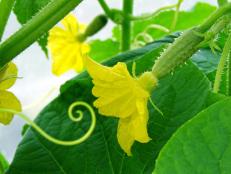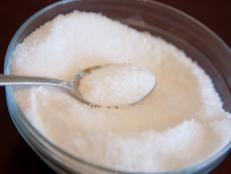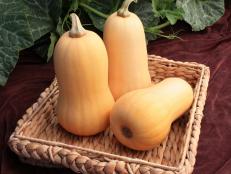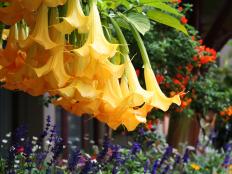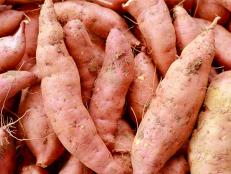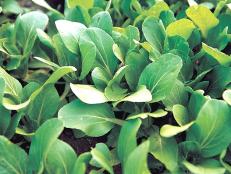Planting and Growing Cabbage
Cabbage is a classic vegetable that's been a staple in human diets for millennia. Learn how to grow cabbage in your garden.

Debbie Wolfe

There's something so cheerful about a row of cabbage growing in a fall garden. Those round rosettes of leaves are lovely to look at and good for you, too. Cabbage contains more Vitamin C than an orange and is also a great source of antioxidants, beta carotene, fiber and minerals.
Cabbage is a cool-weather crop that's best grown in late summer to fall for most climates, after the heat of summer has passed. Cabbage can't take heat and will bolt (go to seed) in temperatures higher than 80 degrees.
Cabbage can be planted in the spring in mild climates. In northern climates, you can grow cabbage all summer long, re-seeding so you can harvest heads all season. It's a moderately fast-growing veggie, with plants maturing 60 to 90 days after planting.
Here's how to grow cabbage and how to harvest cabbage in your garden.
Cabbage 101
Cabbage is a biennial, but most people grow it as an annual. It's in the brassica genus along with broccoli, cauliflower, and kale.
There are three basic types of round-headed cabbage:
- Green Cabbage is the most commonly grown type, a cabbage that can be used in anything from soups to salads to stir fries.
- Red Cabbage looks like green cabbage but it's magenta. It tends to be sweeter than green cabbage and is used raw in salads, slaws and as garnish on fish tacos and other foods. You can cook red cabbage, but it turns a weird blue color.
- Savoy Cabbage, also known as curly cabbage, has pretty, ruffled leaves. It's more tender than other varieties and it's often used in wraps, salads or stir fries.
Cabbage can be super cold tolerant, with some varieties able to withstand freezing temperatures, so it's popular with northern gardeners because it can keep growing through the darkest days of winter. It's best to sow it directly into the ground or transplant it into the garden in late winter/early spring in cooler climates, and in late summer in warmer climates for a fall/winter harvest.
Cabbage was first domesticated in China more than 4,000 years ago. Cabbage varieties were cultivated in ancient Egypt, Greece, and Rome, too, but they were non-heading, leafy varieties that looked more like their kale cousins. The first round-headed cabbages were grown in 14th-century England, and by the Middle Ages cabbage was a fixture in European cuisine. Round-headed cabbage arrived in the Americas in the 16th century with French explorers.
Bet you thought the Irish brought cabbage to America, didn't you?
Botanical Name: Brassica oleracea
Common Name: Cabbage, Head Cabbage
Bloom Time: Early spring
Plant Type: Biennial, but grown as an annual vegetable
Hardiness Zones: 2 to 11
Planting Cabbage
You can grow cabbage from seed or buy transplants from a nursery. For seeds, start cabbage indoors about 6 to 8 weeks before your last frost date and transplant the cabbages outdoors as soon as the garden soil is workable. Transplants — whether yours or the ones grown by a nursery — can handle a little frost.
Choose a spot that gets sun. Cabbage needs at least six hours of sunlight per day. Since cabbage doesn't set flower or fruit, it can handle some shade and will benefit from shade in hot places.
Loosen the soil and amend with organic material before planting. Cabbage needs rich, well-drained soil that has been amended with organic material like compost.
Space plants 1 to 2 feet apart. Give your cabbage plants room to make heads.
Caring for Cabbage
Water cabbage regularly, giving each plant 1.5 inches of water per week when there is no rain. Too little moisture will lead to tiny heads that aren't filled out with leaves.
Keep soil moist by mulching. This will protect the roots from temperature extremes, too.
Cabbage can tolerate cold. It can survive a frost and temperatures as low as 20 degrees.
Fertilize with compost every 2 to 4 weeks. Cabbages can be heavy feeders, so they'll benefit from your help in keeping their soil rich and nutritious throughout the growing season.
Companion planting. It's a good idea to plant cabbage near onions, carrots and herbs like rosemary and oregano, because those veggies and herbs have an aroma that disguises the scent of the cabbage and makes it harder for cabbage-eating pests to find them.
How to Harvest Cabbage
Most varieties of cabbage are ready to harvest two months after putting out transplants.
Harvest cabbage when the head is fully formed and firm to the touch. You can remove the entire plant or cut off the head at its base and leave the outer leaves and roots in the ground for a second harvest of smaller heads.
You can store cabbages for months in a root cellar where temps are between freezing and 45 degrees. You can freeze cabbage, too.
Freezing Cabbage
Scratch store-bought cabbage off your grocery list — and fill your freezer with homegrown cabbage instead.
Pests and Diseases
Cabbage is vulnerable to a lot of diseases and pests, including the following:
Cabbage worms and cabbage loopers chew holes in the leaves. They're two of cabbage's main nemeses. Pick them off when you see them.
Slugs love to attack cabbages, too. Pick them off when you see them.
Aphids will suck the sap out of cabbage leaves. Spray with insecticidal soap to get rid of them.
Clubroot, blackleg, black rot and fusarium wilt are all fungal diseases that infect your cabbage. Blackleg puts dark spots on leaves and stems, black rot turns the veins dark and stinky, clubroot deforms roots and stunts plants and fusarium leaves you with yellowing, stunted heads. Once your cabbages have a fungus, there isn't much you can do to save them. Your best bet is prevention by choosing disease-resistant varieties, rotating your cabbage crop so fungi don't establish themselves in the soil and clearing all plant debris from your garden between seasons. Those dead leaves can harbor fungus spores.
Recommended Cabbage Varieties
'Early Jersey Wakefield' is an heirloom that's an adaptation of an old English cabbage and has been grown in US gardens since the 1840s. It produces large, dense heads that weigh 3 to 4 pounds each with a sweet flavor. It's a classic cabbage.
'Earliana' is another heirloom, an early-maturing cabbage that is ready to harvest just 60 days after planting seeds.
'Brunswick' is a German heirloom that dates to the 18th century and grows huge, 7- to 9-pound heads. It's super cold hardy, so it can be stored a long time. It's traditionally used in sauerkraut.
'Charleston Wakefield' is an heirloom that's heat tolerant and can be grown in most parts of the US. It grows dense, dark green heads that average 4 to 6 pounds.
'Mammoth Red Rock' is a red heirloom that dates to the 19th century and grows big, 8-pound heads.
'Savoy Perfection' is a savoy variety with crinkled leaves
Cabbage Recipes from Food Network
Get Food Network's best cabbage recipes — a crave-worthy list that proves the veggie is anything but boring.






